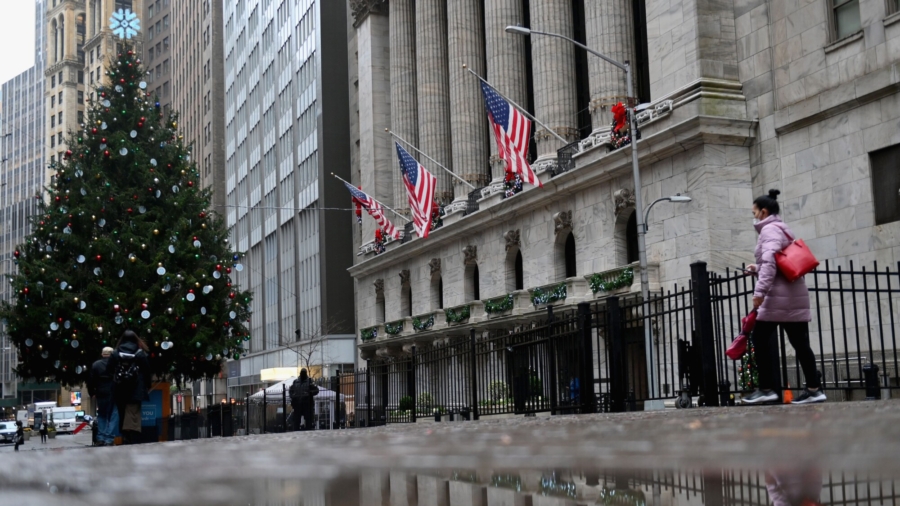White House economic advisers issued a note on Thursday clarifying the definition of recession prior to the release next week of probably dismal economic data.
Most economists generally look for two consecutive quarters of decline in gross domestic product (GDP) to determine whether an economy has entered a recession. The White House Council of Economic Advisers, however, opposes this definition in a new blog.
“While some maintain that two consecutive quarters of falling real GDP constitute a recession, that is neither the official definition nor the way economists evaluate the state of the business cycle,” the officials wrote.
The second-quarter GDP data will be released on July 28.
The U.S. economy shrank at an annualized pace of 1.6 percent in the first quarter, and most economists are now forecasting another drop in the second quarter.
The Atlanta Federal Bank’s GDPNow estimate shows that the United States is currently in an economic downturn. The model projects that the contraction in the second-quarter GDP would be negative 1.6 percent.
Recessions, according to the White House, should be determined and “based on a holistic look at the data,” by taking into account the labor market, consumer and business spending, industrial production, and earnings, as opposed to economic growth data in just two quarters.
The White House claims that the most recent economic data, including the strong jobs market, do not indicate a recession.
“Based on these data, it is unlikely that the decline in GDP in the first quarter of this year—even if followed by another GDP decline in the second quarter—indicates a recession.”
However, many economists believe the chances of a “soft landing” for the U.S. economy have diminished. Economic activity has been slowing for the past several months. Consumers are cutting back on their spending due to rising inflation and declining real wages. In addition, a rising-rate environment is expected to make it harder to obtain credit or service debts. As a result, demand for goods and services is projected to deteriorate.
Consumer spending makes up two-thirds of the U.S. economy, so when it falls, businesses suffer and jobs are lost. The labor market is already exhibiting signs of cooling, despite the strong employment recovery this year.
Hence, some are accusing the Biden administration of downplaying recession concerns, and the recent blog is interpreted as an attempt to control messaging ahead of likely poor GDP data due next week.
“Recession probabilities are never zero, but trends in the data through the first half of this year used to determine a recession are not indicating a downturn,” the White House economic advisers wrote.
Who Declares Recessions?
Recessions in the United States are officially declared by a committee of economists at the National Bureau of Economic Research (NBER). The NBER defines a recession as “a significant decline in economic activity that is spread across the economy and that lasts more than a few months.”
In the blog, the White House refers to the NBER’s definition and states that the “variables the committee typically tracks include real personal income minus government transfers, employment, various forms of real consumer spending, and industrial production.”
“All of these indicators have exhibited strong growth in the U.S. economy since the start of the pandemic, and have continued to expand through the first half of this year.”
The White House officials, in the blog, also explain why real GDP fell by 1.6 percent in the first quarter of this year.
Far from being a general slowdown, they noted, the negative growth rate was caused by inventories and net exports. This was partly because “our economic strength relative to that of our trading partners, as well as less snarled global supply chains.”
Meanwhile, they pointed out that consumer spending and corporate investments, which together account for more than 80 percent of GDP, rose at an annualized rate of 3.0 percent in the first quarter, “demonstrating solid, above-trend growth.”
The White House also highlighted the historically low unemployment rate of 3.6 percent, claiming that it “has bearing on the recession question.”
Consumers, businesses, and forecasters, however, are not as upbeat as the White House officials. Because of high inflation and deteriorating demand, many economists have recently been revising their recession forecasts upward.
According to a recent Goldman Sachs survey, the majority of small-business owners believe the nation is moving in the wrong direction, with 93 percent of respondents anticipating a recession within the next six months.
From The Epoch Times

